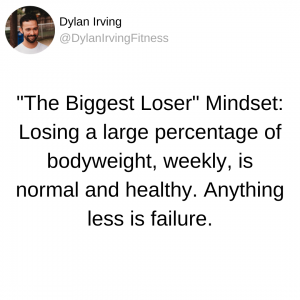Welcome to the first installment of the Strong Woman Education series!
This info is intended to be helpful to you in your Strong Woman journey, and we’ll cover relevant topics that we don’t get to talk much about in person. Hopefully, this series will help explain why we train as we do. Our first topic is Maximum Recoverable Volume (MRV). By the end of this, you should have a better understanding of why training as heavy as possible at all times won’t help you gain strength.
What is MRV?
The MRV theory states that there is an upper limit on how much exercise we can recover from… if a workout or exercise is too intense, a person can’t recover from that workout or exercise in a way that allows the body to repair muscles and gain strength. If workouts are too intense for too long (weeks, months), a person could get weaker.
MRV is highly individual; it varies from person to person, and can even change in one person at different times (i.e., when you’re 21 vs. 35, or when you’re low stress vs. high stress.) Different muscles in your body also have different MRVs. This has to do with muscle fiber type, which is also highly individual. For example, a person could probably do bicep exercises more frequently than deadlifts. This is why we don’t squat, deadlift, or overhead press every single workout, but we do core work multiple times per week. Your MRV will also increase as you gain more strength, skill, and experience.
What affects a person’s MRV?
It’s A LOT of different things, such as:
+ Training experience: How long you’ve been training, what kind of training you’ve been doing, and at what intensity
+ Genetics: Certain muscle fiber types recover more quickly than others, and we’re each made up of a different percentage of each kind of muscle fiber based on genetics.
+ Aerobic capacity/conditioning: better conditioning and aerobic capacity delivers oxygen and nutrients to the muscles faster and more efficiently.
+ General Health: any health conditions that inhibit recovery, blood flow, protein absorption, and processing, etc.
+ Lifestyle influences: alcohol, hydration, sleep, nutrition, recreational drug use, prescription drugs, smoking. We’ll get more into how those things affect recovery another time.
+ Mental Health and Stress Management: the body reads workouts as stress (yes, even if you *enjoy* working out) because of the minor damage that occurs during workouts. Too much cumulative stress and the body won’t recover as well.
Each of these things affects MRV to a different degree in each person as well… it’s all a rather complicated puzzle, and there is, unfortunately, no way to calculate your exact MRV. It also changes as you become more experienced. The good news is that, like much in fitness and nutrition, we don’t need an exact answer.
Why is MRV important?
Let’s look at it through the lens of what happens if we don’t honor our MRV, and instead push past it. There are two major points here:
+ You won’t get stronger, and you may actually get weaker. If you train so hard that you’re crawling out of the gym, can’t function for the rest of your day, and don’t pay attention to your recovery practices, your body will have a tough time recovering from that workout. It won’t repair your muscles in a way that makes them stronger. At best, your body will repair your muscles to get them back to their pre-workout baseline, which means you don’t get stronger, but at least you won’t get weaker. At worst, your body can’t repair your muscles to pre-workout baseline, and you’ll get weaker.
+ You’re much more likely to get inured. If you’re training beyond what your body can handle, your form probably isn’t consistently good. Poor form certainly leads to eventual injury, one way or another. Also, since your body can’t properly recover (heal) from your workouts, you’ll accumulate muscle damage and fatigue in a way that weakens the structures you’re using to work out.
How do I know if I’m training past my MRV?
+ Your form breaks down for the number of reps you’re shooting for. For example, you’re aiming for eight reps in total. Your first five are solid, and your last three are crap. This is a clear sign your body isn’t ready for the amount of weight you’re lifting in that rep range.
+ You’re feeling lethargic
+ Aren’t sleeping well
+ Appetite is much lower than usual
+ Heart rate is faster than average, even at rest
+ Aches and pains, you get sick or feel like you’re getting sick
+ Feeling weak during workouts
+ Moods become unstable, and you’re feeling irritable or anxious, have trouble concentrating
+ Sweating much more than usual
+ Feeling uninterested in working out when you’re typically very interested in working out
+ No longer making progress in your workouts.
Some of these things happen in our normal, day to day lives, and some of them are signs of other things going on. If you can check off most of these boxes AND you’ve been training hard recently, it’s a sign you’ve pushed too far for too long. If these signs are ignored or pushed through, things can and will only get worse, and injury becomes increasingly likely.
How is our training structured to honor our MRV?
We train in a way where workouts get progressively harder over 4 or 5 weeks.
The first week should be relatively light and comfortable and is designed such that we get somewhere close to the “minimum effective dose” of exercise. Your body will still respond and build muscle and strength, even though it doesn’t feel super challenging. This gives you a chance to work on and improve form without overloading your body too early.
Weeks 2 and 3 get progressively more challenging, with weights that should approach a moderately challenging level.
The 4th week in a typical cycle is where we approach our MRV. This week should feel challenging, but should not utterly destroy you. The goal is to spend one week training close to our MRV, and then ideally deload (either partially or fully) the following week, so our body has the time it needs to recover and make appreciable strength gains.
So what does all of this mean?
We shouldn’t avoid tough workouts altogether; it’s great to have a tough workout that challenges you mentally and physically every once in a while. However, those workouts should only happen one week out of each month, and they should be meaningfully built up to rather than randomly inserted.
———————————
WHEW. If you made it the whole way through that piece, thank you for reading! I’d love to hear your feedback. Did this raise any other questions for you? Was it easy enough to read and digest? What other topics would you like to read about?
Email me at dylanirvingfitness@gmail.com and let me know!
Want to learn more about the Strong Woman team? Click here to read more.
Ready to be a part of the Strong Woman team? Click here to schedule your free consultation.







